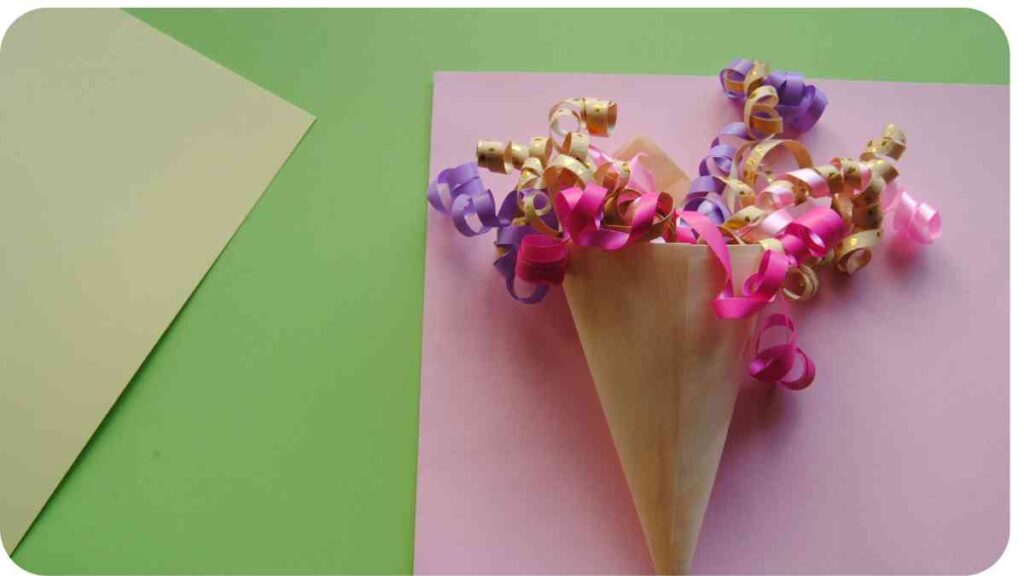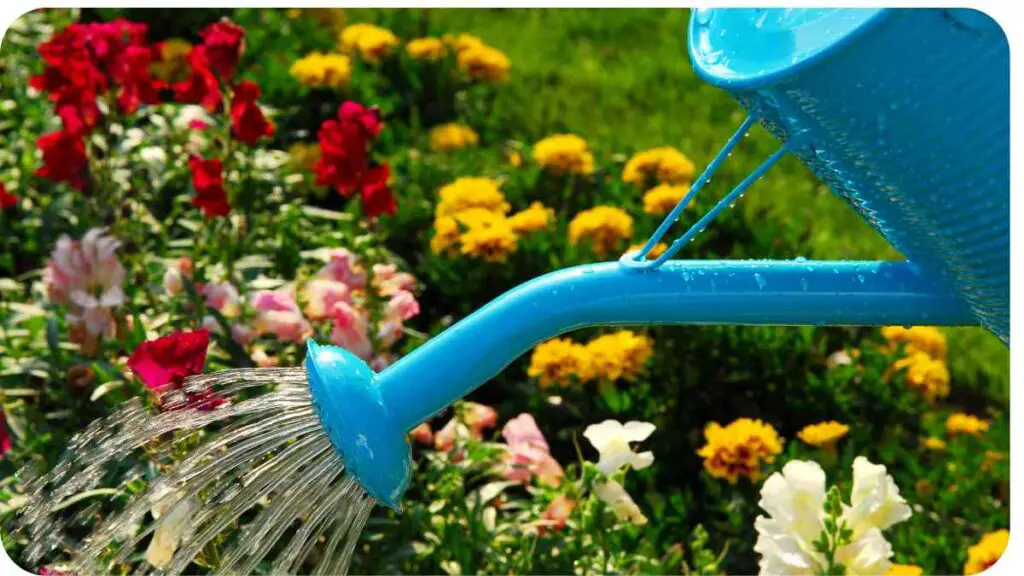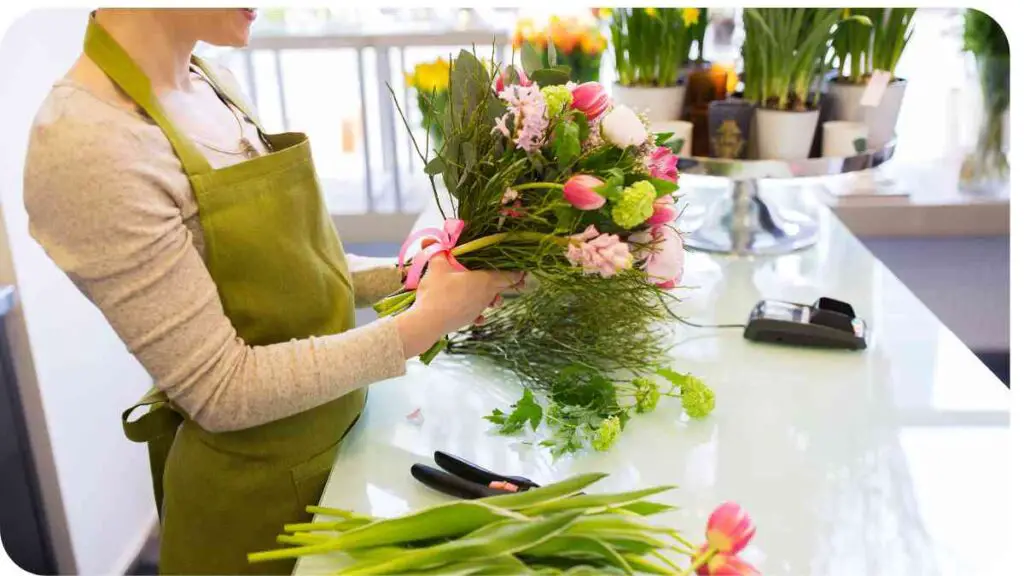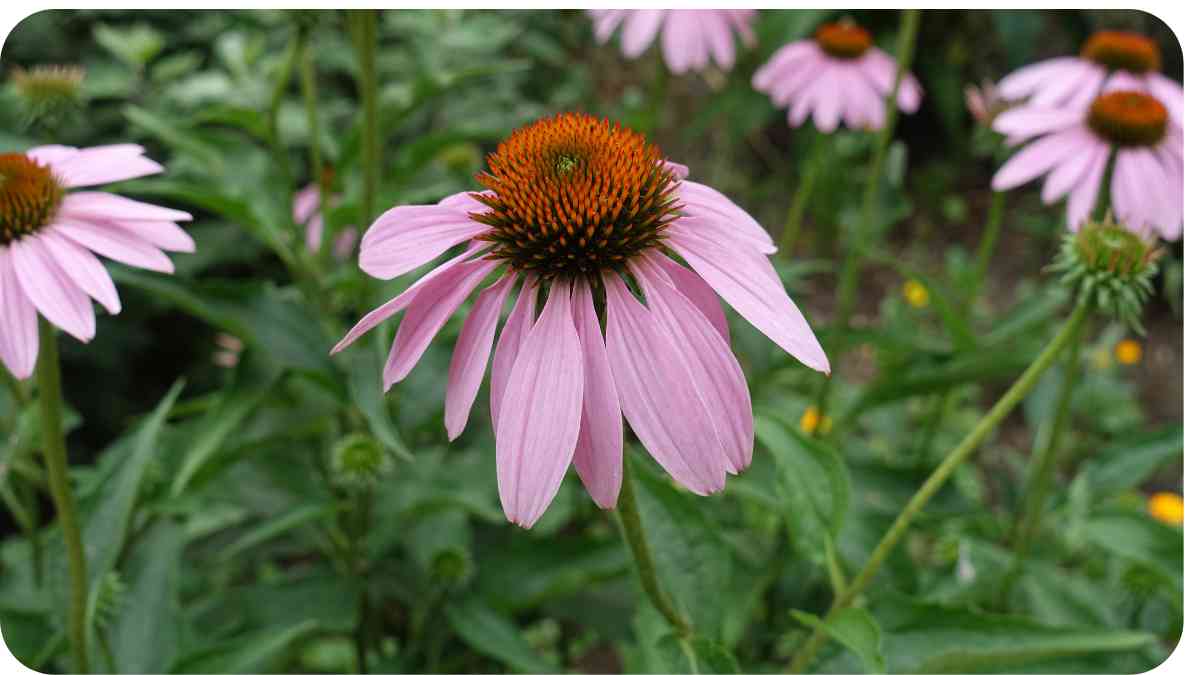Have you ever noticed those charming, cone-shaped flowers in a garden or a wild meadow? They stand out, don’t they? Cone-shaped flowers not only add beauty to our surroundings but also have various uses and benefits.
In this article, we’ll dive deep into the world of cone-shaped flowers, exploring their names, types, growing tips, and much more. Whether you’re a seasoned gardener or just a flower enthusiast, you’ll find plenty of valuable information here. So, let’s get started!
| Takeaway |
|---|
| Cone-shaped flowers have a distinctive tapered form. |
| Popular types include Echinacea, Lupine, and Foxglove. |
| Ideal growing conditions vary by species, but most prefer well-drained soil and full to partial sunlight. |
| Regular watering, fertilizing, and pruning are essential for healthy growth. |
| Cone-shaped flowers attract pollinators like bees and butterflies. |
| Echinacea has medicinal uses, known for boosting the immune system. |
| They can be used in various landscaping designs and floral arrangements. |
| Dried cone-shaped flowers are great for crafts and indoor decorations. |
| Different varieties are found worldwide, each adapted to local climates. |
| Cone-shaped flowers hold cultural significance and symbolism in various cultures. |
What Are Cone-Shaped Flowers?

Definition and Characteristics
Cone-shaped flowers, as the name suggests, have blooms that resemble the shape of a cone. These flowers usually have a central spike or column surrounded by petals, creating a tapered form. This unique shape makes them easily recognizable and quite popular in gardens and landscapes.
For garden enthusiasts, understanding what flowers are toxic to humans is crucial. This knowledge ensures that while you enjoy the beauty of cone-shaped flowers, you also maintain a safe environment for yourself and your loved ones.
Types of Cone-Shaped Flowers
Annuals and Perennials
When it comes to cone-shaped flowers, you have options between annuals, which complete their life cycle in one growing season, and perennials, which come back year after year. Understanding the difference can help you choose the right flowers for your garden’s needs.
Popular Cone-Shaped Flowers
Echinacea
Echinacea, commonly known as coneflower, is a standout among cone-shaped flowers. These perennials are known for their medicinal properties and vibrant colors, ranging from pink and purple to white and yellow.
Lupine
Lupines are another favorite, offering tall spikes of densely packed flowers. They come in various colors and are loved for their ability to attract pollinators like bees and butterflies.
Foxglove
Foxglove flowers, with their tubular, cone-like blooms, are both striking and versatile. They can add height and drama to any garden.
Bellflower
Bellflowers are known for their bell-shaped blooms, which form a cone-like structure. They are perfect for adding a touch of elegance to your flower beds.
When selecting flowers for solemn occasions, knowing which flowers are popular for funerals can guide you in choosing the right blooms. Cone-shaped flowers can be a fitting addition to funeral arrangements, offering both beauty and respect.
Growing Cone-Shaped Flowers in Your Garden

Ideal Conditions
Cone-shaped flowers thrive in different conditions depending on the species. However, most prefer well-drained soil and full to partial sunlight. Ensure you check the specific needs of each flower type to provide optimal growing conditions.
Planting Tips
When planting cone-shaped flowers, it’s crucial to space them appropriately to avoid overcrowding. Also, planting them at the right depth and time of year can significantly impact their growth and bloom.
Care and Maintenance
Watering
Regular watering is essential, especially during the initial growth phase. However, be cautious not to overwater, as it can lead to root rot.
Those captivated by unique flower forms might also explore what are different types of blue flowers. Blue flowers, paired with cone-shaped varieties, can create a stunning garden display, offering a rich palette of colors and shapes.
Fertilizing
Fertilizing your cone-shaped flowers can promote healthy growth and vibrant blooms. Use a balanced fertilizer and follow the recommended application schedule.
Pruning
Pruning helps maintain the shape and health of your plants. Remove dead or damaged flowers to encourage new growth and prevent diseases.
Common Pests and Diseases
Identifying Pests
Cone-shaped flowers can attract various pests like aphids, slugs, and caterpillars. Regular inspection and prompt action can keep these pests in check.
Preventive Measures
Implementing preventive measures such as using natural predators, organic pesticides, and maintaining plant health can reduce the risk of pest infestations and diseases.
Using Cone-Shaped Flowers in Landscaping
Design Ideas
Cone-shaped flowers can be used in various landscaping designs. They can serve as focal points, border plants, or even in mixed flower beds. Their unique shape adds texture and interest to any garden.
Companion Plants
Pairing cone-shaped flowers with suitable companion plants can enhance their beauty and health. For instance, planting them alongside low-growing ground covers can create a stunning visual effect.
Appreciating the deeper meanings behind blooms can be enriching. Learning about chrysanthemum flower meaning helps you select flowers that not only look beautiful but also convey specific sentiments, enhancing the emotional impact of your garden.
Cone-Shaped Flowers for Pollinators
Benefits for Bees and Butterflies
Cone-shaped flowers are excellent for attracting pollinators. Their structure makes it easy for bees and butterflies to access nectar, supporting these crucial insects in your garden.
Best Varieties for Pollinators
Flowers like Echinacea and Lupine are particularly effective at attracting pollinators. Including these in your garden can create a vibrant and lively ecosystem.
Dried Cone-Shaped Flowers
Drying Techniques
Drying cone-shaped flowers is a great way to preserve their beauty. Techniques such as air drying, using silica gel, or pressing can keep their form and color intact.
Uses in Crafts
Dried flowers can be used in various crafts, from making wreaths to creating decorative arrangements. They bring a touch of nature indoors, no matter the season.
Cone-Shaped Flowers in Floral Arrangements

Arrangement Tips
Cone-shaped flowers add height and interest to floral arrangements. Combine them with other blooms of varying shapes and sizes for a balanced and eye-catching bouquet.
Popular Varieties for Bouquets
Echinacea and Foxglove are popular choices for bouquets due to their striking appearance and longevity as cut flowers.
Medicinal Uses of Cone-Shaped Flowers
Herbal Remedies
Many cone-shaped flowers, such as Echinacea, have been used in herbal remedies for centuries. They are known for their immune-boosting and anti-inflammatory properties.
Common Applications
These flowers can be used in teas, tinctures, and topical applications to treat various ailments, from colds to skin conditions.
Cultural Significance
Historical Context
Cone-shaped flowers have a rich history in various cultures. For example, Native Americans used Echinacea for its medicinal properties long before it became popular in modern herbal medicine.
Symbolism
Different cone-shaped flowers carry unique symbolism. Echinacea, for instance, represents strength and health, making it a thoughtful gift for someone recovering from illness.
Cone-Shaped Flowers Around the World
Regional Varieties
Cone-shaped flowers are found in many regions worldwide, each with unique varieties adapted to their local climates. Exploring these regional differences can inspire new additions to your garden.
Growing Conditions in Different Climates
Understanding the specific growing conditions for cone-shaped flowers in various climates can help you successfully cultivate them, no matter where you live.
Conclusion
Cone-shaped flowers are more than just pretty faces in the garden. They offer ecological benefits, medicinal properties, and cultural significance. By understanding their needs and characteristics, you can enjoy these unique blooms in your own garden, adding beauty and diversity to your landscape. So, why not give cone-shaped flowers a try? Happy gardening!
Further Reading
For more in-depth information on cone-shaped flowers, check out these valuable resources:
- Floral Design Institute: Cone Flower
Explore detailed descriptions, care tips, and creative uses for cone flowers in floral designs. - Bio Explorer: Cone-Shaped Flowers
A comprehensive guide to various cone-shaped flowers, their characteristics, and growing conditions. - Alamy: Cone-Shaped Flowers
Browse a vast collection of images of cone-shaped flowers to get visual inspiration for your garden.
FAQs
What are some common names of cone-shaped flowers?
Common names of cone-shaped flowers include Echinacea (coneflower), Lupine, Foxglove, and Bellflower. Each of these flowers has a unique structure and beauty.
How do I care for cone-shaped flowers in my garden?
Caring for cone-shaped flowers involves regular watering, proper fertilization, and occasional pruning. Ensure they are planted in well-drained soil and receive adequate sunlight.
Are cone-shaped flowers good for attracting pollinators?
Yes, cone-shaped flowers are excellent for attracting pollinators like bees and butterflies. Their structure makes it easy for these insects to access nectar.
Can cone-shaped flowers be used in herbal remedies?
Many cone-shaped flowers, such as Echinacea, have medicinal properties. They are often used in herbal remedies to boost the immune system and reduce inflammation.
What are some popular varieties of cone-shaped flowers for floral arrangements?
Popular varieties for floral arrangements include Echinacea and Foxglove. These flowers add height and interest to bouquets and are known for their longevity as cut flowers.

I am Hellen James, a landscape architect. For many years I have written about landscaping for various publications; however, recently decided to focus my writing on personal experience as a profession.

